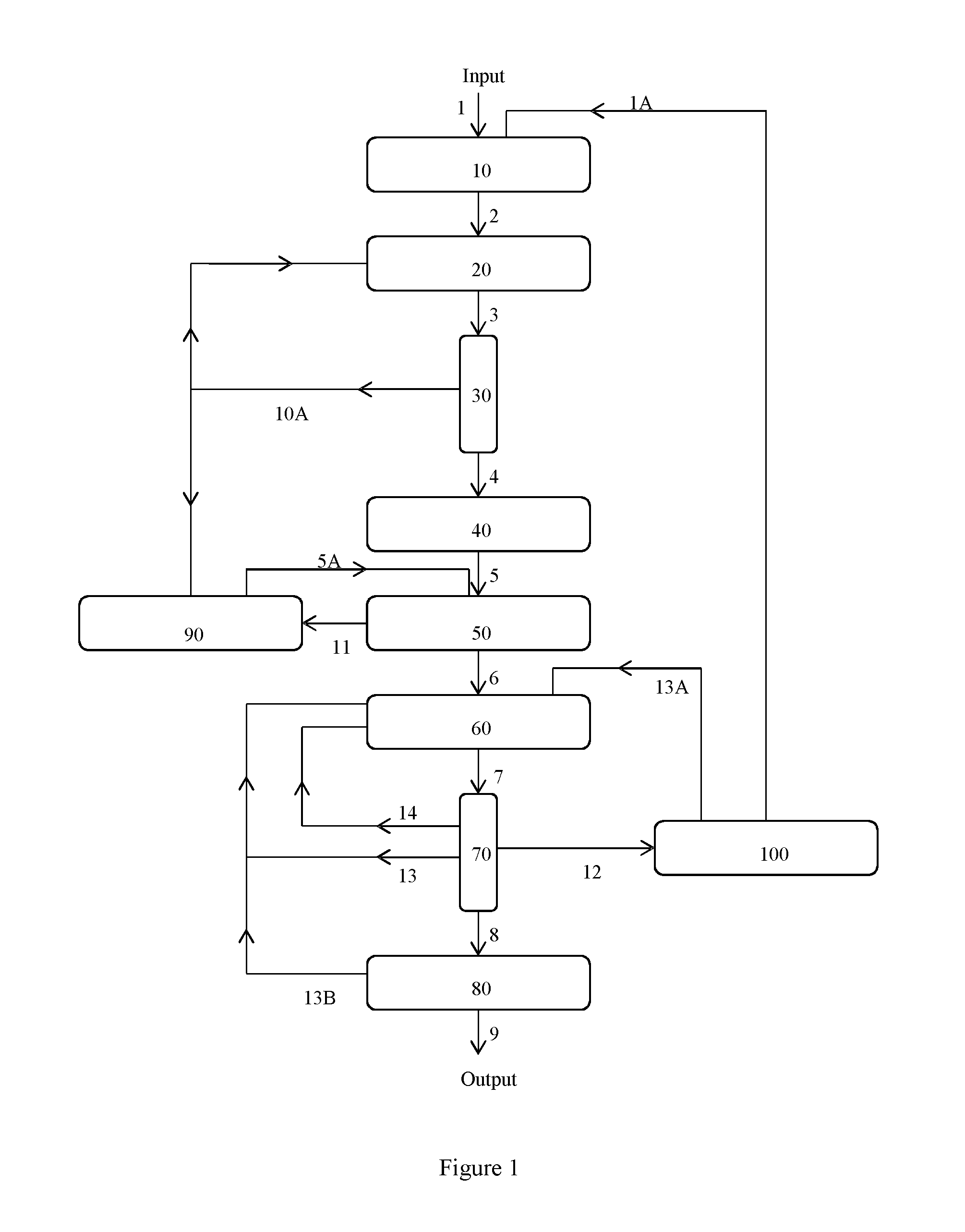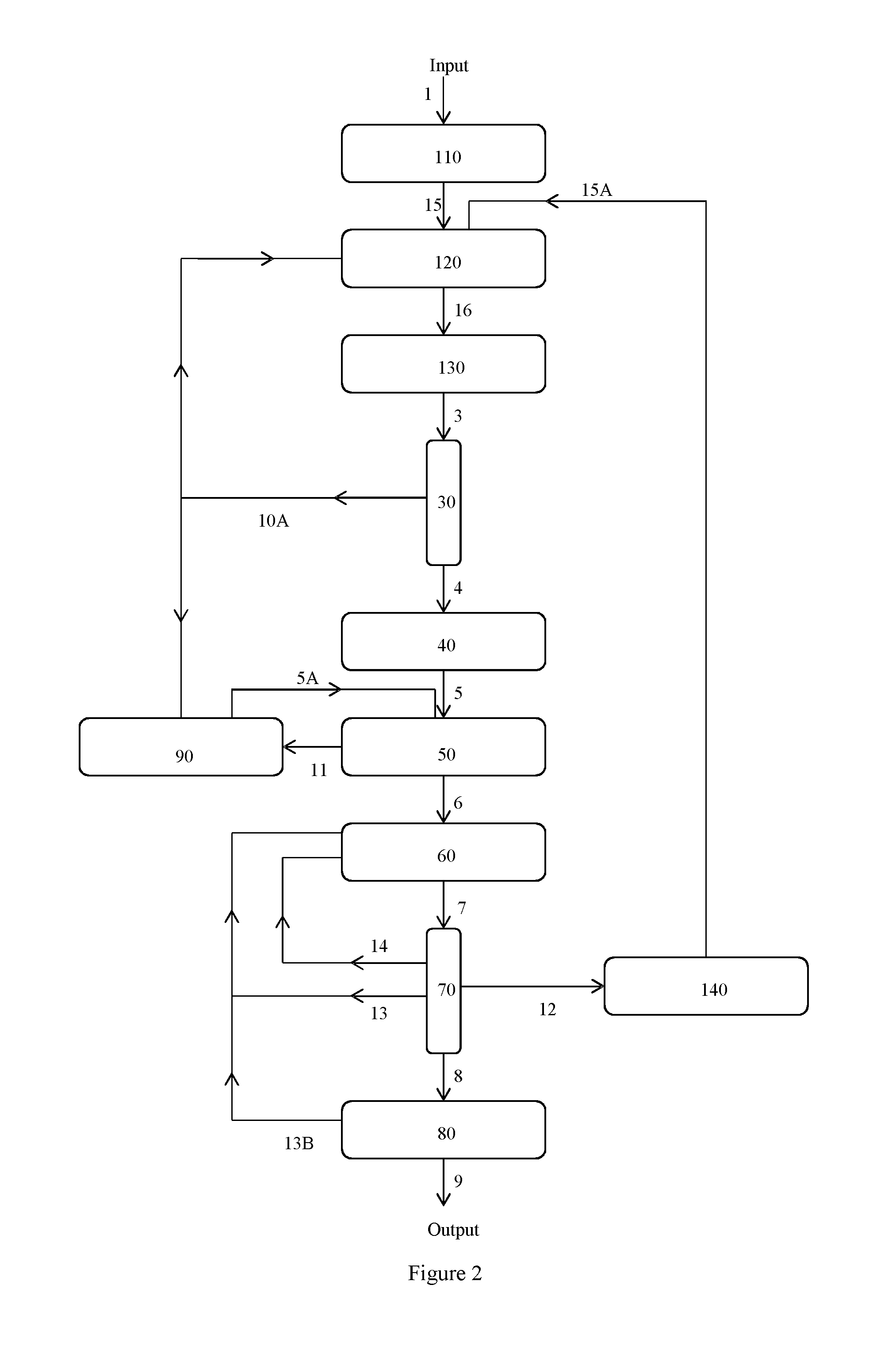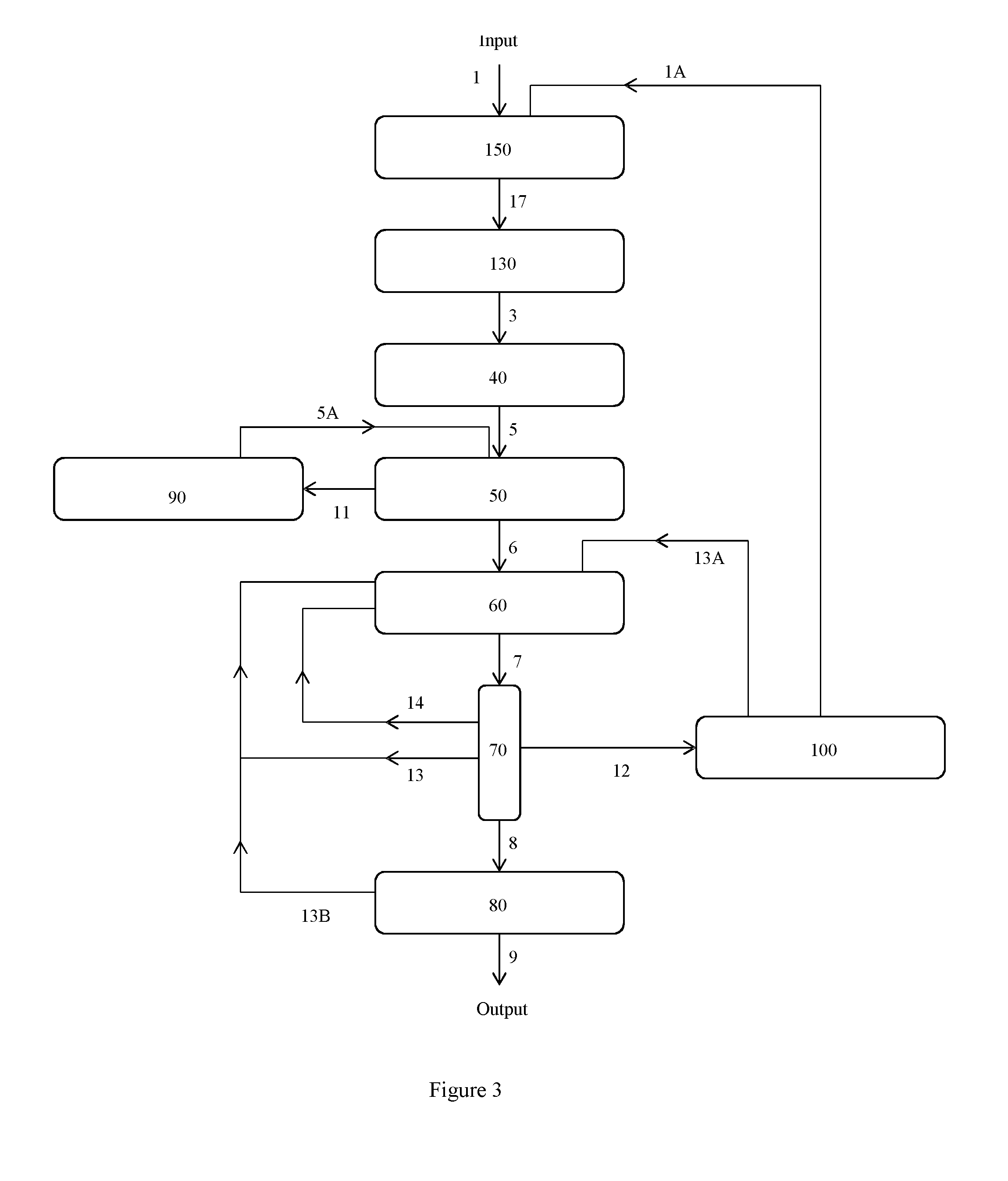Lactate Production Process
a technology of r-lactic acid and production process, which is applied in the preparation of carboxylic acid esters/lactones, organic chemistry, fermentation, etc., can solve the problems of difficult to obtain high molecular weight materials, difficult to reliably use on a large industrial scale, and high price of modified bacteria and the associated processes
- Summary
- Abstract
- Description
- Claims
- Application Information
AI Technical Summary
Benefits of technology
Problems solved by technology
Method used
Image
Examples
example 1
S-Lactic Acid Racemisation Using Organic Bases
[0080]S-Lactic acid solution (1.64 kg, 80% wt in water, 14.6 mol) was heated to 120° C. for 4 h at 100 mbar to remove the aqueous solvent (and some condensed water of oligomerisation). The temperature was then raised to 140° C. for 60 minutes and then to 160° C. for a further 60 minutes to form oligomeric S-lactic acid. The flask contents were then cooled to 140° C. and placed under 1 atm of N2. Triethylamine (147 g, 0.1 molar equivalents) was added dropwise over 15 minutes and the reaction mixture was held at 140° C. for 60 minutes to form oligomeric lactic acid. The reaction mixture was finally heated to 200° C. and the pressure reduced to 100 mbar to thoroughly remove the Et3N.
[0081]Hydrolysis of the oligomeric product and analysis by chiral liquid chromatography confirmed the presence of equal quantities of S- and R-lactic acid components.
example 2
Conversion of S-Lactic Acid into S,S-, R,R-, and R,S-Lactide Using Metal Salts
[0082]S-lactic acid solution (85 wt % in water, 59 mls / 60.3 g) and calcium stearate (3.45 g, 0.01 molar equivalents) were stirred together in an unstoppered round-bottom flask fitted with internal thermocouple, and a magnetic stirrer bar. The mixture was heated to 160° C. for 18 hrs to remove water (lost to the atmosphere) forming oligomeric lactic acid.
[0083]The flask was then adapted for a distillation under reduced pressure by adding a still head, a condenser, a take-off arm connected to a vacuum pump and a collection flask (cooled in a solid CO2 / acetone slush bath). A vacuum of 20 mbar was applied and the flask temperature was slowly increased until lactide began to distil at 188° C. Over the course of the distillation the temperature was slowly increased up to a maximum of 242° C. in order to keep the rate of lactide production approximately constant.
[0084]The yield of the collected lactide mixture wa...
example 3
Racemisation of Lactic Acid Using Low pH Hydrothermolysis
[0085]S-Lactic acid solution was diluted in water to concentrations of 0.01, 0.1, 1.0, and 2.0M and was then pumped vertically upwards through a trace heated stainless steel reaction tube (0.5 inch outer diameter, 36 cm length, 35 ml internal volume) at a flow rate of 1.2 ml / min using an HPLC pump (calculated residency time in the reactor=29 minutes). The tube was heated to temperatures of 250, 275, 300 and 325° C. while the internal pressure was maintained at 150 bar via a back-pressure regulator attached to the top of the reaction tube after a cooling coil to quench reaction. The liquid vent from the regulator was collected and analysed by chiral liquid chromatography to determine the degree of racemisation.
Concentration of S-Lactic Acid (Molar)0.010.11.02.0% R-% R-% R-% R-TemplacticTotal lacticlactic Total lacticlactic Total lactic lacticTotal lactic(° C.)acidacid yield %acidacid yield %acidacid yield %acidacid yield %2505....
PUM
| Property | Measurement | Unit |
|---|---|---|
| temperature | aaaaa | aaaaa |
| temperature | aaaaa | aaaaa |
| enantiomeric excess | aaaaa | aaaaa |
Abstract
Description
Claims
Application Information
 Login to View More
Login to View More - R&D
- Intellectual Property
- Life Sciences
- Materials
- Tech Scout
- Unparalleled Data Quality
- Higher Quality Content
- 60% Fewer Hallucinations
Browse by: Latest US Patents, China's latest patents, Technical Efficacy Thesaurus, Application Domain, Technology Topic, Popular Technical Reports.
© 2025 PatSnap. All rights reserved.Legal|Privacy policy|Modern Slavery Act Transparency Statement|Sitemap|About US| Contact US: help@patsnap.com



